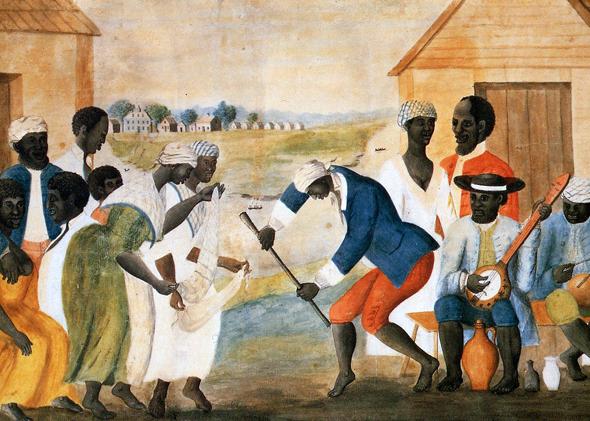I don’t have any do’s for writing book reviews on slavery—I don’t have any do’s for writing book reviews, period—but I have a few don’ts, courtesy of the Economist’s now-withdrawn review of The Half Has Never Been Told: Slavery and the Making of American Capitalism, a new book from Cornell University historian Edward Baptist.
Don’t use movie stills to illustrate your review. In particular, don’t use a photo of Patsey from 12 Years a Slave, captioned with the point that she was a “valuable property,” since in the film—and in reality—Patsey was raped and beaten by her owner.
When confronted with evidence that slavery was an immense driver of American prosperity—by 1860, the nearly 4 million American slaves were worth $3.5 billion, the single largest financial asset in the entire economy at the time—don’t assert that this is “overstating the case” and that we can’t dismiss the “‘traditional explanations’ for America’s success: its individualistic culture, Puritanism, the lure of open land and high wages, Yankee ingenuity and government policies.” If that’s your objection, you have to make the case with evidence, and admit those explanations include pro-slavery government policies.
Part of the story of the early American economy was its reliance on cotton production. By 1860, thanks to huge gains in cotton productivity, the United States supplied a huge portion of the world’s cotton consumption. Cotton brought investment, was used as collateral, and fueled business across the country, from slaveholders in the South to entrepreneurs in the North. For Baptist, a part of this productivity is greater control over slave activities and greater slave-master brutality.
If you disagree with this, reviewer, don’t wave it away with ambiguity—“a historian cannot know whether these few spokesmen adequately speak for all”—and special pleading, “Slave owners surely had a vested interest in keeping their ‘hands’ ever fitter and stronger to pick more cotton. Some of the rise in productivity could have come from better treatment.” After all, we know quite a bit about slave treatment, and how high value didn’t stop slaveowners from torture, sexual assault, whippings, and selling children as punishment.
And let’s talk about your conclusion. You write: “Mr. Baptist has not written an objective history of slavery. Almost all the blacks in his book are victims, almost all the whites villains. This is not history; it is advocacy.” Here’s the problem: If American slavery was anything, it was an institution where almost all the blacks involved were victims and almost all the whites involved were villains. Which is to say, my last piece of advice is this: Don’t slam an author for a lack of balance in a book on slavery. Like it or not, this is a case where there is no balance to have. You either side with the slaves, or like a host of now-disgraced historians you’ve channelled, you don’t.
